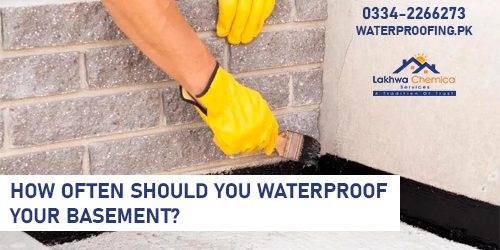Waterproof your Basement is the best place for shelter against hurricanes, tornadoes, and typhoons. It is a valuable part of a home, offering an expansive area for recreational activities, storage, and other works. A finished basement is an energy-efficient living space; it helps regulate the internal temperature of the structure.
Apart from the advantages, there are some drawbacks of basements too. One of them is water seepage. This problem, if left undetected, can lead to mold growth, structural damage, and improper air quality. So, to prevent the issue, waterproofing is a must!
Let’s discuss the parameters of layering the basement!
Initial Waterproofing: Necessary or Not?
When a structure is formed, a proper waterproofing system is applied. However, the frequency of reapplication can vary. If the system was developed with premium-quality materials, and if no significant structural changes or issues took place, no waterproofing would be required. However, conduct regular inspections to ensure that the original waterproofing remains intact and effective. Signs of deterioration, such as cracks, leaks, or dampness, may indicate the need for maintenance or repairs.
Read More
Can I Waterproof Without Primer?
Primer Application on Damp Walls – Feasibility and Risks
What is the Best Material for Waterproofing Basement Walls?
Climate Considerations
Climate also plays a significant role in waterproofing basements. Areas with high rainfall, frequent flooding, or extensive snowmelt may require more attention. In such regions, annual or bi-annual inspections are often recommended. On the other hand, homes in arid regions with minimal moisture-related issues may not require frequent maintenance.
Changes in Home or Landscape
Any significant changes to structures or the surrounding landscape can affect the waterproofing needs of the basement. If you’ve made renovations or additions to your home, it’s a good time to reassess Waterproof your Basement. Changes in the layout or structure of your home may alter the water flows around your foundation, potentially impacting your basement’s vulnerability to moisture.
Likewise, alterations to the landscape, such as changes in the yard slope, or installation of new drainage systems can influence the flow of water.
Signs of Damage or Deterioration
Regardless of your location or changes, it’s essential to inspect the basement for signs of damage or deterioration. Key indicators include:
- Visible cracks or holes in the foundation walls or floor
- Condensation or dampness on walls or surfaces
- Musty odors or signs of mold growth
- Water stains or discoloration on walls or floors
- Frequent or recurring basement flooding
- Peeling paint or efflorescence (white, powdery substance on the walls).
Types of Waterproofing Systems
Common waterproofing methods include interior and exterior systems, as well as a combination of both.
Exterior waterproofing involves the application of waterproof coatings, membranes, or drainage systems on the outside of the foundation. These systems are effective, but require resealing or maintenance over time, especially if they are exposed to harsh weather conditions.
Interior waterproofing focuses on managing moisture and water that has entered the basement. Sump pumps, interior drainage systems, and vapor barriers are the best solutions. Interior systems require less maintenance but need regular checks to ensure smooth operation.
Combining both interior and exterior waterproofing methods provides a comprehensive approach to basement waterproofing.
Read More
What is the Difference Between Sealant and Waterproofing?
Which is the Best Sealant for Basement Walls?
Different Types of Waterproofing Tests
Professional Evaluation
It’s a good practice to hand over your premises to a professional for evaluation. A professional inspection can identify potential vulnerabilities that may not be apparent to homeowners. Experts can recommend maintenance or repairs, if necessary, to address potential problems and extend the lifespan of your waterproofing system.
Conclusion
There is no one-size-fit-answer for Waterproof your Basement. The rate of basement waterproofing depends on various factors, including location, type of waterproofing system, and signs of damage or deterioration in closed structures. Regular inspections and proactive maintenance can help ensure a dry and protected basement. Remember that when in doubt, it’s always a good idea to consult with a professional waterproofing contractor who can provide expert guidance tailored to your specific situation.
If you want to have a moisture-free basement, contact Waterproofing.pk, one of the most famous companies in Karachi, Pakistan.







